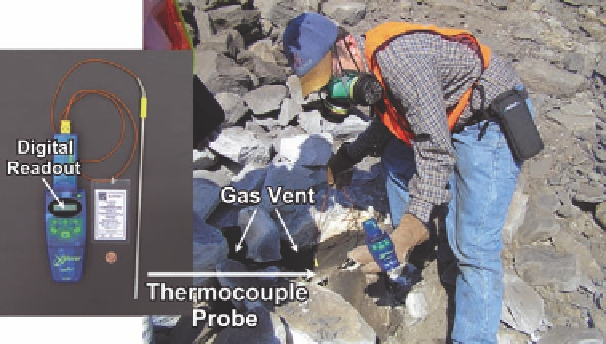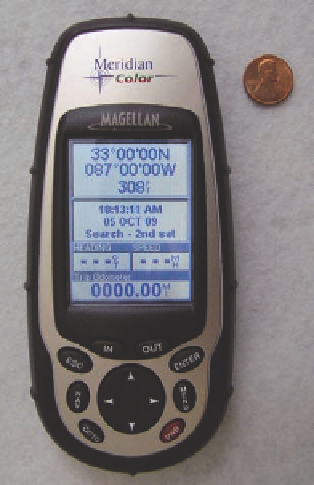Geology Reference
In-Depth Information
Figure 9.2.3. G.B. Stracher using a Pasco
®
physics (Roseville, California) Explorer data logger and high-
temperature type K thermocouple probe at a South African mine fire. Gas temperature at this vent was 320°C
and climbing fast when Stracher had to remove his hand, with an insulated leather glove, from the vent to avoid
being burned by the intense heat. The heat also partially melted the insulation on the wire connecting the digital
readout gauge to the stainless steel probe. Encasing the wire in high-temperature insulation may have prevented
this from happening. From Stracher et al., 2005b, with permission of the Geological Society of America.
Figure 9.2.4. Magellan
®
handheld GPS unit. This model is waterproof and includes a backlit screen for readability
on a cloudy day or after sunset. Similar units are offered by other manufacturers. Photo by Glenn B. Stracher, 2009.
Mineral and Rock-Collecting Techniques
T
he most difficult part of collecting the mineral by-products of combustion associated with coal-fire gas for
identification and chemical analysis is to avoid contaminating the minerals with the soil or rock substrate
they nucleated on. X-ray diffraction and electron probe analysis of the minerals are then easier to interpret.
One method for collecting delicate or small amounts of these minerals is to scrape them off of the underlying
substrate into a vial using a metal spatula and laboratory scoop (Figure 9.2.5). Some separation of the




